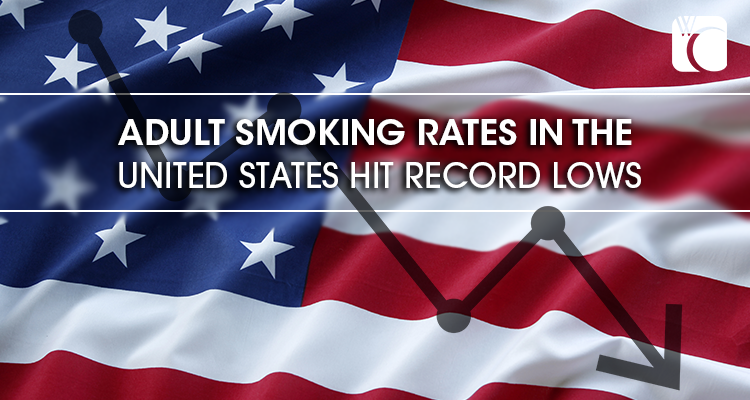A new CDC report contains some exciting news: The smoking rates in the United States are at an all time low. Sadly, this tremendous achievement has been shamefully underreported compared to scary headlines about teens vaping that have been dominating the news and internet. Contrary to what some news outlets have reported, e-cigarettes have likely played a substantial role in reducing tobacco use throughout the country.
Smoking Rates Hit Record Low

According to the CDC, about 14 percent of Americans are regular smokers in 2018, which is a 15.5 percent drop from the previous year. Since the federal government started tracking trends of tobacco use and smoking rates in 1965, the percentage of the population that smokes has gradually diminished due to successful public health campaigns and nicotine replacement therapies. That said, there’s been an ever bigger decline in smoking rates in just the past few years. What has changed?
The obvious answer, to us, is vaping. E-cigs were developed over a decade ago to help people quit smoking, and many smokers have found vaping helpful for reducing or stopping their tobacco use. Unfortunately, the CDC continually refuses to acknowledge the potential of e-cigs to save lives.
“The jury’s still out on the effectiveness of e-cigarettes for helping people quit,” says Brian King, author of the CDC report. “Although anecdotally we know that there are many people who are quitting using e-cigarettes, the plural of anecdote is not data,” the report concludes.
Actually, there are multiple studies suggesting that e-cigs have contributed to the decreasing smoking rate in the US. Analysis of data collected from the 2015 Tobacco Use Supplement-Current Population Survey revealed a correlation between e-cig use and successful smoking cessation. Another study found that e-cigs are more effective at helping people quit tobacco than traditional nicotine therapies like patches and gums.
How the News Media Misleads About Vaping

Many media outlets have taken what the CDC says at face value without digging any further into the facts surround the decrease in smoking rates. For example, The Verge ran the headline “Cigarette smoking hits a low in the US, but don’t thank vapes for it.” In its summation of the recent CDC report, Axios included the misleading claim “About 47 million Americans are still using some type of tobacco product, like e-cigarettes or smokeless tobacco.” Of course, e-cigs are not traditional tobacco products, and the statement fails to acknowledge a report from Public Health England published in 2015 that determined vaping to be “at least 95% less harmful” than smoking.
Rather than focusing on the success of e-cigs in moving the needle on American smoking rates, most media outlets have been pushing a narrative driven by the FDA: Flavored e-cigs are luring teens into a life of vaping and eventually smoking. Although the e-cig gateway myth was debunked a while back, CBS still recently ran with the headline “E-cigarettes may be a gateway to smoking for teens.” Likewise, a recent LA Times headlines claims “Teens who vape are more likely to smoke later.”
The rise of the vaping industry has clearly coincided with a steep decline in tobacco use, which is the opposite of what would be expected if e-cigs served as a gateway to smoking. Still, the FDA and CDC are capitalizing on public fear to call for greater restrictions on the vaping industry. For example, the FDA has released a proposal to limit accessibility of flavored e-liquids in retail locations, which would hurt ex-smokers who depend on flavored e-cigs to quench their nicotine cravings and help them continue a life free of combustable tobacco products.
The Future of E-cigs and Tobacco Harm Reduction
The CDC is correct when it says that more studies are needed to assess the efficiency of e-cigs in helping people quit smoking; however, the agency shouldn’t ignore the research that is currently available. Research continues to suggest that vaping has helped many people give up tobacco for good, and in turn, drive down national smoking rates.








